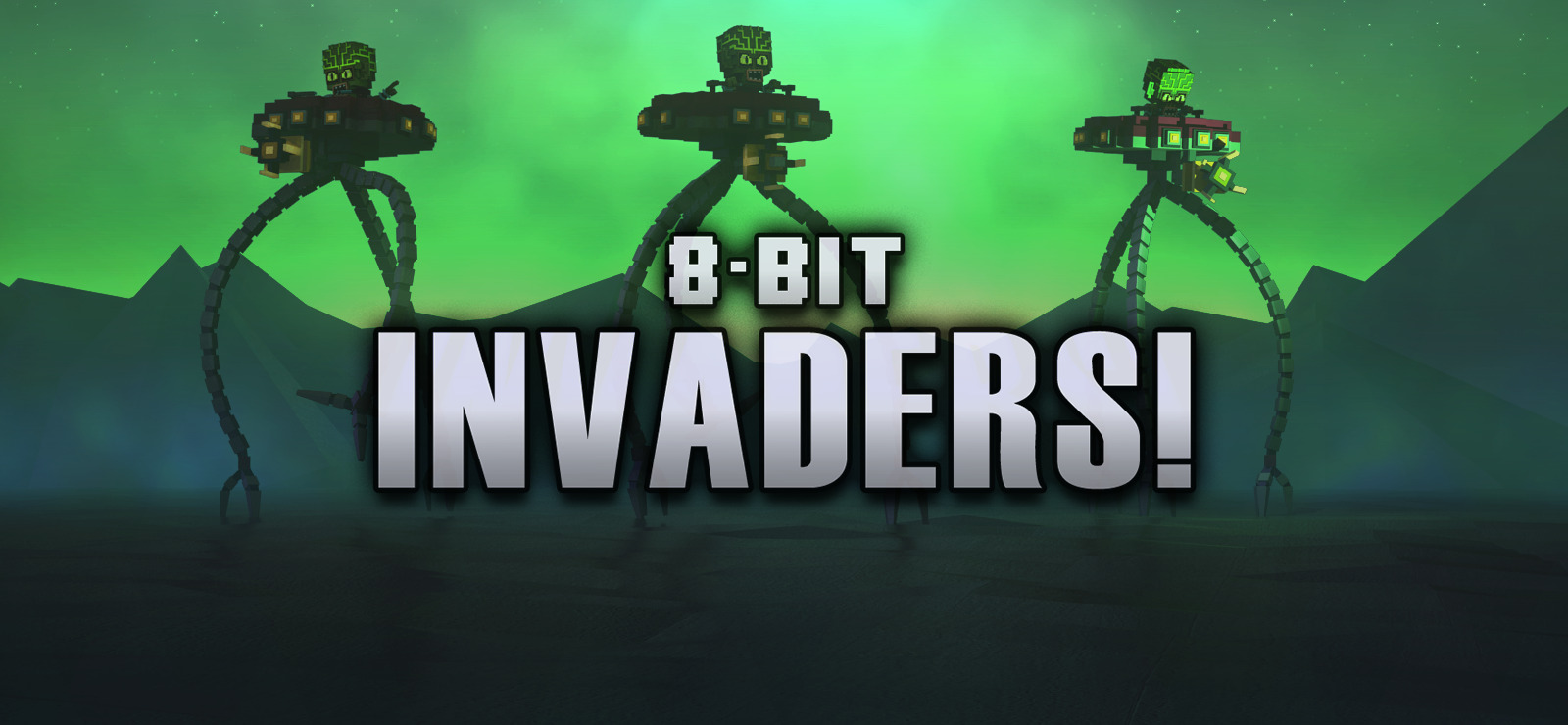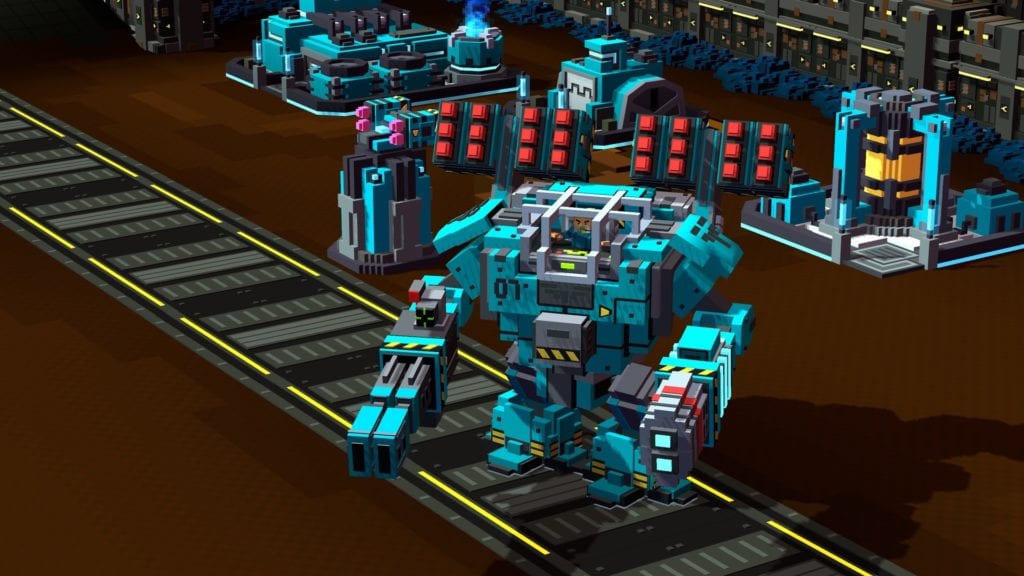A Closer Look at 8-Bit Armies/Hordes/Invaders!
"Petroglyph's Throwback to RTS Classics"
Westwood's Spiritual Successor
Strategy gamers of the early Millennial generation will remember Westwood and its classic
Command and Conquer series. After Westwood's dissolution into Electronic Arts, the original team departed and created
Petroglyph, which produced titles such as
Star Wars: Empire at War, and more recently,
Grey Goo. With the modern industry's fascination with remastered throwbacks in mind, Petroglyph produced its 8-bit series. With the original development team spearheading the effort, the similarities between the 8-bit series and C&C clearly emerge.
The Apple Closest to the Tree
The first of the 8-bit series released was
8-bit Armies. It features modern-day vehicles and weapons, and is the closest to
Command and Conquer in aesthetic and gameplay.

[caption id="" align="alignnone" width="641"]

It's almost like the similarities between the two games were intentional![/caption]
Immediately, players familiar with the first
Command and Conquer games will recognize the user interface. The menu is on the right hand side and divided into two tabs below the minimap on the upper right hand of the screen. The rest of the screen is dedicated to the window. This format is identical to the early
Command and Conquer titles, and its first two Red Alert spinoffs.
Incidentally (or perhaps intentionally), the strategy for 8-bit armies shares the same fundamental philosophy of the
Command and Conquer series, namely the unit-spam. Both
Command and Conquer and it's
Red Alert spinoff de-emphasize resource management and focus more on unit production and military tactics. Because of this, players familiar with the build order and opening strategies of
Command and Conquer games will find
8-bit Armies an easy transition.
Another key feature of Westwood (and by extension Petroglyph) games is the ability for certain vehicles to run over infantry. Because of this, and because of their high armor and overall damage capability, tanks are a prime candidate for unit spam. In
8-bit Armies, this strategy is especially prevalent, as bottom tier units like infantry are incapable of defending against a swarm of tanks at critical mass. Top tier units like aircraft have a long and expensive production time that cannot be produced in the numbers capable of fighting off their rush. As a result, a player's success in head-to-head multiplayer in the 8-bit series depends on their APM (actions-per-minute), much like
StarCraft II.
8-Bit Hordes, a.k.a. Not-Warcraft
The next genre the 8-bit series took on modelled itself after high-fantasy, with several nods to Blizzard's earlier installments of Warcraft. The similarities between the title screens run so close that one could confuse
8-bit Hordes as a Chinese bootleg of the real product.

[caption id="" align="alignnone" width="300"]

For the (not) Horde![/caption]
Players should also expect to see identical cornerstone game mechanics. Both factions require upgrading existing buildings to unlock late-game units and additional construction options. Unlike the power system seen in
8-bit Armies,
8-bit Hordes features population limits.
These minute but fundamental shifts in-game mechanics develop into widely different strategies than seen in
8-bit Armies. Though unit-spam in both games win the day, the path to enable the means depends on the player's faction.
The Future is Retro
[caption id="" align="alignnone" width="1600"]

The war of the worlds came early[/caption]
The latest installment to the 8-bit series comes in the form of 8-bit Invaders! This game draws parallels to Blizzard's
StarCraft II, while simplifying the model. Between high-tech Marines and the swarm-happy Cranioids, players find two fundamentally different factions (for once).
Every Marine structure and unit comes with rechargeable shields (Protoss, anyone?), and players have to keep power in mind for build orders. Cranioids, however, require population management, but generally advance faster through their tech tree and produce units faster. A feature unique to
8-Bit Invaders! is that both factions only need a single harvester per node. Also unlike the two games that preceded it, the
8-bit Invaders! factions utilize super units instead of superweapons.
[caption id="" align="alignnone" width="1920"]

It's not a Thor, but it'll have to do.[/caption]
Are Throwbacks Worth Throwing Cash At?
At 15 dollars a piece, the 8-bit series enjoys mostly positive, but mixed reviews. Some appreciate the style of strategy and aesthetic that the games evoke, while others complain of a simplistic, easy-to-cheese game that holds little substance. I think that when viewed as a whole, the 8-bit series reveals the diversity present in modern strategy games.
Early strategy games, being pioneers in their field, did not feature many practical paths to victory. Every faction, with its strengths and weakness, boiled down to a surefire build order and proper (read: quick) application. This is true of
StarCraft,
Warcraft, and the early
Command and Conquer series. Some players enjoy this style of strategy, while others desire games that require micromanagement and combined arms.
The simplicity of the 8-bit games makes it intuitive and easy to pick up. As a result, the market that these games best appeal to are entry-level strategists. Whether through single-player, co-op, or head-to-head, the 8-bit series teaches players to find a successful process, and stick with it. Though it lacks sophistication, the 8-bit games lends itself as good teachers of classic RTS practices. Ultimately, the 8-bit series knows what it's about, and appeals to a niche group of gamers from years past. Players looking for something innovative ought to look elsewhere.
 [caption id="" align="alignnone" width="641"]
[caption id="" align="alignnone" width="641"] It's almost like the similarities between the two games were intentional![/caption]
Immediately, players familiar with the first Command and Conquer games will recognize the user interface. The menu is on the right hand side and divided into two tabs below the minimap on the upper right hand of the screen. The rest of the screen is dedicated to the window. This format is identical to the early Command and Conquer titles, and its first two Red Alert spinoffs.
Incidentally (or perhaps intentionally), the strategy for 8-bit armies shares the same fundamental philosophy of the Command and Conquer series, namely the unit-spam. Both Command and Conquer and it's Red Alert spinoff de-emphasize resource management and focus more on unit production and military tactics. Because of this, players familiar with the build order and opening strategies of Command and Conquer games will find 8-bit Armies an easy transition.
Another key feature of Westwood (and by extension Petroglyph) games is the ability for certain vehicles to run over infantry. Because of this, and because of their high armor and overall damage capability, tanks are a prime candidate for unit spam. In 8-bit Armies, this strategy is especially prevalent, as bottom tier units like infantry are incapable of defending against a swarm of tanks at critical mass. Top tier units like aircraft have a long and expensive production time that cannot be produced in the numbers capable of fighting off their rush. As a result, a player's success in head-to-head multiplayer in the 8-bit series depends on their APM (actions-per-minute), much like StarCraft II.
It's almost like the similarities between the two games were intentional![/caption]
Immediately, players familiar with the first Command and Conquer games will recognize the user interface. The menu is on the right hand side and divided into two tabs below the minimap on the upper right hand of the screen. The rest of the screen is dedicated to the window. This format is identical to the early Command and Conquer titles, and its first two Red Alert spinoffs.
Incidentally (or perhaps intentionally), the strategy for 8-bit armies shares the same fundamental philosophy of the Command and Conquer series, namely the unit-spam. Both Command and Conquer and it's Red Alert spinoff de-emphasize resource management and focus more on unit production and military tactics. Because of this, players familiar with the build order and opening strategies of Command and Conquer games will find 8-bit Armies an easy transition.
Another key feature of Westwood (and by extension Petroglyph) games is the ability for certain vehicles to run over infantry. Because of this, and because of their high armor and overall damage capability, tanks are a prime candidate for unit spam. In 8-bit Armies, this strategy is especially prevalent, as bottom tier units like infantry are incapable of defending against a swarm of tanks at critical mass. Top tier units like aircraft have a long and expensive production time that cannot be produced in the numbers capable of fighting off their rush. As a result, a player's success in head-to-head multiplayer in the 8-bit series depends on their APM (actions-per-minute), much like StarCraft II.
 [caption id="" align="alignnone" width="300"]
[caption id="" align="alignnone" width="300"] For the (not) Horde![/caption]
Players should also expect to see identical cornerstone game mechanics. Both factions require upgrading existing buildings to unlock late-game units and additional construction options. Unlike the power system seen in 8-bit Armies, 8-bit Hordes features population limits.
These minute but fundamental shifts in-game mechanics develop into widely different strategies than seen in 8-bit Armies. Though unit-spam in both games win the day, the path to enable the means depends on the player's faction.
For the (not) Horde![/caption]
Players should also expect to see identical cornerstone game mechanics. Both factions require upgrading existing buildings to unlock late-game units and additional construction options. Unlike the power system seen in 8-bit Armies, 8-bit Hordes features population limits.
These minute but fundamental shifts in-game mechanics develop into widely different strategies than seen in 8-bit Armies. Though unit-spam in both games win the day, the path to enable the means depends on the player's faction.
 The war of the worlds came early[/caption]
The latest installment to the 8-bit series comes in the form of 8-bit Invaders! This game draws parallels to Blizzard's StarCraft II, while simplifying the model. Between high-tech Marines and the swarm-happy Cranioids, players find two fundamentally different factions (for once).
Every Marine structure and unit comes with rechargeable shields (Protoss, anyone?), and players have to keep power in mind for build orders. Cranioids, however, require population management, but generally advance faster through their tech tree and produce units faster. A feature unique to 8-Bit Invaders! is that both factions only need a single harvester per node. Also unlike the two games that preceded it, the 8-bit Invaders! factions utilize super units instead of superweapons.
[caption id="" align="alignnone" width="1920"]
The war of the worlds came early[/caption]
The latest installment to the 8-bit series comes in the form of 8-bit Invaders! This game draws parallels to Blizzard's StarCraft II, while simplifying the model. Between high-tech Marines and the swarm-happy Cranioids, players find two fundamentally different factions (for once).
Every Marine structure and unit comes with rechargeable shields (Protoss, anyone?), and players have to keep power in mind for build orders. Cranioids, however, require population management, but generally advance faster through their tech tree and produce units faster. A feature unique to 8-Bit Invaders! is that both factions only need a single harvester per node. Also unlike the two games that preceded it, the 8-bit Invaders! factions utilize super units instead of superweapons.
[caption id="" align="alignnone" width="1920"] It's not a Thor, but it'll have to do.[/caption]
It's not a Thor, but it'll have to do.[/caption]